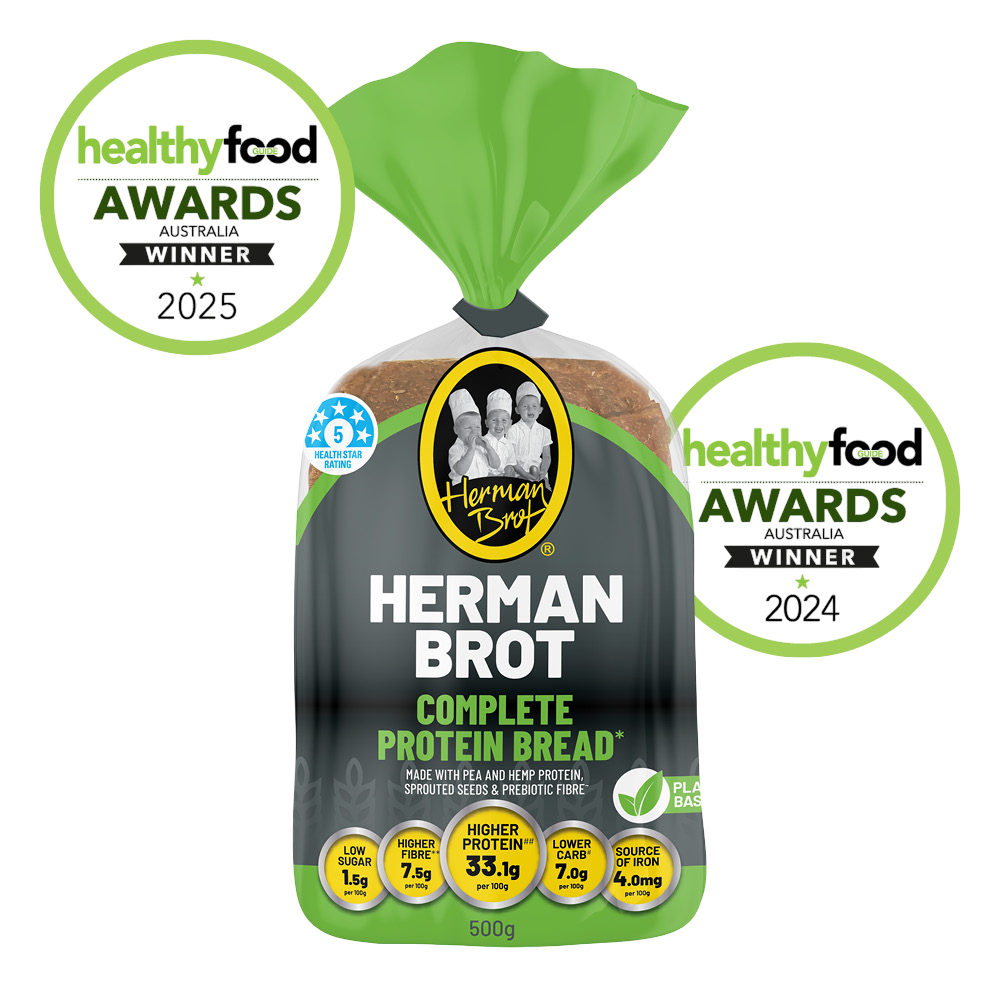CSIRO LOW-CARB DIET NOT A PASSING FAD

Low carb, high protein and low GI are the key nutritional features found in all Herman Brot products and will continue to be the key features in all new products moving forward.
Herman Brot founder Christian Coenen (who has reversed his Type 2 Diabetes by following a low carb diet) believes that this combination of benefits are ‘your recipe for life’.
The CSIRO are a long-time supporter of our brand with our Herman Brot Low Carb bread in their current program.
With so many diets in the marketplace, it is so confusing for consumers to get a clear picture of what has been tested and actually works.
Low-Carb still reigns as the hero and if you’re interested in learning more, CSIRO’s Asaesja Young tells us why –
Low-carb isn’t a new concept. In fact, it’s been around for so long that people might have forgotten about it. But in a world full of nutrition noise, few diets have undergone the type of rigorous testing and research which still hold true.
With so many variations and options out there, we’re providing a science-based insight into the world of eating low-carb.
You have (low-carb diet) questions, we have answers
What is ‘low-carb’?
Low-carb is often defined as a diet providing less than 130 grams of total carbohydrates per day. In our CSIRO Low-Carb Diet, we’ve classified it as 50-70 grams of good quality unrefined, low glycaemic index (GI) carbohydrates. This is compared to the average Australian eating 225 grams per day (Australian Bureau of Statistics).
In a low-carb diet, approximately 10-14 per cent of your total energy intake each day comes from carbs and 58 per cent from healthy fats. We also use a higher protein approach across our meals, reaching 25-30 per cent of your total energy needs for the day. They’re a lot of numbers, but essentially it is a low-carb, high protein and healthy fat plan.
Aren’t fats bad for me?
Since the ’70s many of us have been told a low fat, high-carb, low protein diet is best. So you would be forgiven for thinking fats are bad. But over time, research has shown that all fats aren’t equal. Eating foods high in good fats, like avocado, nuts, olive oil and fish, can help reduce your risk of heart disease. Replacing carbohydrates with higher levels of good fat in your meals and diet can also help to improve blood glucose control (blood sugar, defined in the next question) and reduce the level of blood glucose spikes after eating.
Why are too many carbs or sugars bad for me?
The lower amounts of carbs and higher amounts of proteins and healthy fats in the CSIRO Low-Carb Diet helps the system by reducing these big increases in glucose levels so the system doesn’t have to work as hard. People with type 2 diabetes could see a reduction in their blood glucose levels.
How does a higher amount of protein help me?
Part of the reason low-carb diets are effective at helping you lose weight is increasing the amount of protein you eat. This helps control cravings and suppress your appetite. Eating higher amounts of protein also helps to maintain your muscle mass, which gets your metabolism burning more calories. Just like fats, replacing carbohydrates with higher levels of protein in your diet can also help to improve blood glucose control and reduce the level of blood glucose spikes after eating.
To continue reading, please visit – https://blog.csiro.au/low-carb-diet-scientifically-proven/




